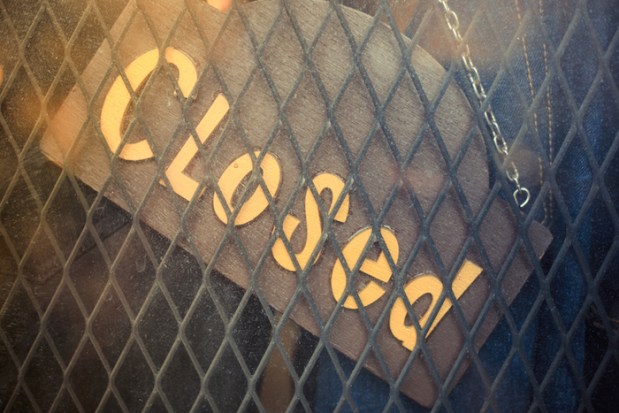Chapter 11 Watch: Sports Authority Sells, Layoffs Hamstring MCX

When it comes to retail bankruptcies, do you want the good news or the bad news first?
The good news: In a marked departure from the months preceding it, no major retailers filed for bankruptcy protection this week.
The bad news: Plenty of brands are still teetering on the Chapter 11 brink, and life-saving alternatives seem to be in short supply.
Bankruptcies
While the second full week of May was mercifully free from brands mercy-killing themselves, there were still plenty of market reverberations from the companies that did in the weeks prior. Perhaps the biggest name to date – and it had some competition – has been Sports Authority, and this week, the needle started moving on the fate of the now-defunct athletic supplier’s remaining assets.
Tuesday (May 17) saw Sports Authority successfully auction off what remains of its in-store assets to a group focused on liquidating as soon as possible. Tiger Capital Group, Gordon Brothers and Hilco Global reportedly contributed to the winning bid of the dustbin-relegated sporting goods retailer, and May 25 has been pegged as the unofficial start of store-closing sales across the country.
In addition to approximately $430 million in loans issued to the retailer, Sports Authority, and its new liquidation allies will split the proceeds of the sales down the middle. However, it’s unlikely to be enough for Sports Authority to pay off the $646 million it owes to creditors tied up in the brand’s supply chain mishaps earlier in the year.
Store Closures
Like Chapter 11 filings, store closures also had a mildly quiet week. In addition to an uncertain number of Sports Authority locations that will almost certainly be shuddered or sold after liquidation sales, the fallout from the nixed Staples-Office Depot merger is throwing a few dozen more storefronts into the wood chipper of harsh financial course corrections. Both brands quickly announced that they would not appeal the ruling that put the legal kibosh on the deal, but Staples took things a step further by announcing that it’d be culling at least 50 stores from the North American market by the end of the year.
“We are positioning Staples for the future by reshaping our business, while increasing our focus on mid-market customers in North America and categories beyond office supplies,” Staples CEO Ron Sargent said in a statement.
Staples’ situation might be an extreme one, but it’s more indicative of the precarious circumstances in which a preponderance of brick-and-mortar brands find themselves. In fact, it’s more than arguable that Staples’ troubles reflect what B&M retail is struggling with much more so than TJX Companies, which recently announced not even a single store closure within any subsidiary brand throughout 2016.
Way to rub it in, TJX.
Layoffs
Where there’s smoke, there’s fire, and where there are store closures, there are retail employees newly made unemployed. However, not all of the pink slips passed out this week happened on the sales floor, though they impact merchants all the same.
Merchant Consumer Exchange made headlines Tuesday (May 17) when it issued an unexpected announcement instead of a long-expected update on CurrentC, a retailer-centric answer to mobile wallets made by third parties like Google and Apple. MCX explained that it was abandoning plans to compete with those payments giants and would lay off half its 60-member staff as part of a pivot toward partnerships with financial institutions instead of retailers themselves.
While retailers might not feel the loss of MCX and CurrentC on their bottom lines, it does remove a potential option in their toolboxes as mobile payments move forward — now, without the input from a developer closer to a retail advocate than a business with its own interests to take care of first.
However, MCX’s severance issues seem positively cheery compared to those faced by home improvement chain Lowe’s. According to a ruling from the U.S. Equal Employment Opportunity Commission, the retailer has for years systematically discriminated against employees claiming disability or medical leave by firing them without proper notice or failing to provide adequate accommodations after they returned to work. While the EEOC didn’t put a number on the number of relieved employees who might be eligible for a portion of the $8.6 million fine, Lowe’s will have to start fielding claims from any employee who had taken his or her maximum amount of medical leave and was subsequently terminated anytime between Jan. 1, 2004 and May 13, 2010.
It is without a doubt a Lowe point for the brick-and-mortar home improvement market.
